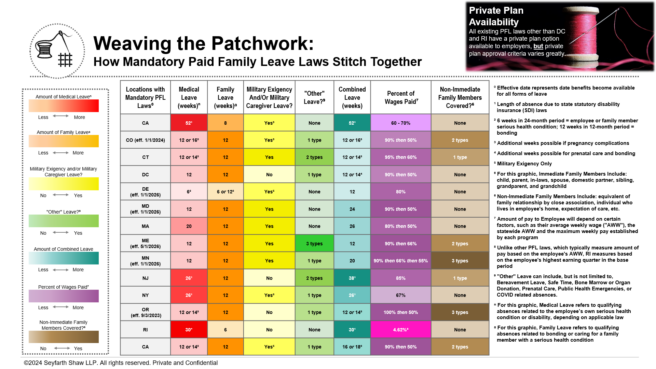Sewing the Fabric: The Role of Mandatory Paid Family Leave Laws in Uniting Families
The complexity and inconsistency of mandatory state Paid Family and Medical Leave (PFML or PFL) laws across the United States have been challenging for employers and employees alike. Each state’s laws differ in substantive and procedural aspects, creating a perplexing variety of requirements. Thirteen states and Washington, D.C. have their own mandatory PFL programs, and these laws continue to evolve and expand into new territories. The patchwork of these programs makes it difficult for employers, particularly those operating in multiple states, to navigate.
A key source of this challenge is how varied these laws are in key PFML substantive areas such as qualifying absences, covered family members, the duration of benefits and leave, and the amount of pay. These factors all demonstrate significant deviations across states. The graphic above highlights the breadth of this variation and complexity. As these mandatory PFML programs are fraught with over thirty technical, substantive requirements, this disparity becomes clear. Even within individual states, amendments, additional rulemaking, or administrative guidance can further complicate these laws.
Extensive variations and nuances within each PFL law create not only an administrative headache for employers but can also lead to inequity and difficulties for employees. Therefore, understanding the various PFML programs and their individual nuances is crucial for both employers and their staff.
If you’re an employee struggling with these complexities and looking to understand your paid family leave options in your state, helpful resources are available. For those specifically in California, consider visiting the website eddcaller.com. It provides specific instructions on how to contact Paid Family Leave representatives who can guide you through your benefits and leave duration, among other details. Don’t let the complexity of the system deter you from understanding and accessing your entitled benefits.
